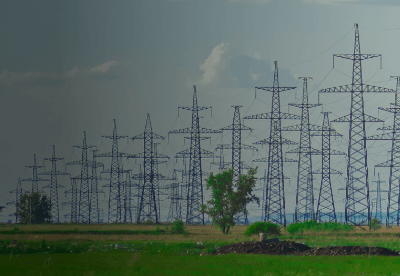Geo-political events are disrupting the supply of traditional energy sources, threatening the energy supply in Europe. As fuel costs continue to rise, the world will be affected, pushing many countries to adopt more green energy sources. The global renewable energy market should reach $1,977 billion by 2030, but the current situation could accelerate this trend. For example, in the UK, energy from renewables is now close to 50%. This poses a unique challenge for grid operators. If half of the energy mix is from new energy sources, the approach to monitoring grid inertia must change to balance demand/supply, preventing a grid collapse. Conventional grids cannot safely accommodate a rapid acceleration of renewable power. Grid monitoring must evolve and adapt to the expansion of renewables and the changes they bring to improve grid performance and the future of energy security.
Challenges of Grid Monitoring with Renewables
The new mix of traditional and renewable energy sources poses new challenges for grid operators in monitoring inertia. Calculating and monitoring grid inertia with traditional energy sources and methods will not be adequate with renewables, causing grid instability. One key reason for this misalignment is that coal-fired and natural gas power plants have traditionally provided steady, highly controllable grid inertia, and grid operators monitored inertia on a periodic schedule. Renewable energy sources require real-time monitoring. As a result, finding a new way to monitor inertia will become critical to ensure grid stability.
Accurate inertia monitoring requires inputs from all centralized and de-centralized generation sources and other related data. When renewables are added to the grid, phaser measurement units (PMUs) become vital. These units are placed within the electricity network and provide valuable data that operators can use to monitor grid inertia. However, determining inertia with renewables requires monitoring PMU data in real time. In addition, grid operators need to leverage technologies like AI and ML for predictive analysis to maintain grid security. The data and analysis provide forecasting and associated grid impact to help operators align power generation sources. Grid operators can use this data to predict problems in advance, ensuring the right mix of renewable versus non-renewable energy sources and the extent to which grid inertia drops below a threshold that would collapse the grid.
Grid stability challenges with renewable energy sources include demand and supply mismatch, frequency and voltage anomalies and overloading existing transmission lines and assets. Grid operators need optimized forecasting, predictive algorithms and real-time data analysis (components of inertia monitoring) for smooth energy transition and grid security. A robust AI and analytics system can accurately monitor inertia and provide forecasting that allows grid operators to ensure the proper frequency containment reserves response levels, type and activation characteristics that align with system conditions, including inertia, from traditional energy sources.
How to Realize a Grid Inertia Monitoring Solution
Most existing grid monitoring software products employ a rule-driven tactic that uses pre-defined fixed rules. Further, traditional grid monitoring solutions do not have real-time access to PMU data. However, the complexity of multiple new energy sources coming into the grid will require PMU data, a wide-area monitoring solution, and a real-time data-driven strategy. These devices are placed strategically in the network. 5G connectivity can feed the data from these devices back to the control center. The real-time data gives grid operators a complete view of all energy sources flowing in, energy demand, and any discrepancies. By digitalizing the entire solution, operators will have real-time information about inertia. If necessary, operators can configure the mix of sources to align the power plants to demand, making the modifications formally indicated by traditional grid buffers.
Energy companies must also add AI for computing, forecasting, and monitoring inertia using ML techniques. Renewables are unique because they require AI to assess system performance using data and external factors that influence inertia. AI and analytics capabilities can provide constant and steady forecasting and estimating values based on demand and supply data. With data like optimizations, thermal management, rotational inertia, functional safety, and more, ML and AI can provide pattern-based predictions for more accurate predictions and analysis.
Wipro Enabled a New Grid Inertia Solution for a Utility Customer
Recently, Wipro worked with a utility in the UK to develop a new way to monitor grid inertia with renewable energy sources and found the most accurate forecasting requires a different approach to what is currently available. New energy sources are intermittent and can cause system frequency and voltage fluctuations, leading to instability and blackouts. Grid operators must ensure energy security through optimized forecasting, predictive algorithms, and real-time analytics using AI/ML. Inertia monitoring is a critical component of maintaining the stability and reliability of the power system, particularly in the face of increasing renewable energy integration. Based on our experience, we recommend new technologies like AI and ML and a real-time data-driven approach to improve grid performance and the future of energy security.
 Locations
Locations



